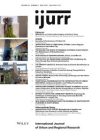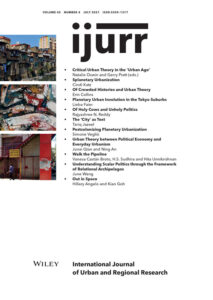Walking reveals how urban infrastructure lends identity to the urban landscape. This article focuses on the oldest water pipeline in the city of Bengaluru, India. A series of vignettes trace the linear trajectory of the walk both in terms of the spatial orientation of the pipeline, and its trajectory through time. Through space, the pipeline connects the centre of the city with its suburbs, tracking differential and sometimes invisible patterns of urbanization that follow the city’s sprawl. Through time, the pipeline connects water narratives, from nostalgic notions of precolonial management to the contemporary construction of scarcity. The use of walking as a methodological tool draws attention to the subsumed and often invisible experiences of inequity in various parts of the city. The pipeline is a maker of urban stories alongside routine practices and larger strategic projects of urban development. While the pipeline enables the provision of water, the neighbourhoods it passes through are sometimes excluded from the service it provides. Strategic projects have attempted to control water resources following different ways of imagining the city. Still, such urban imaginations coexist with a more extensive set of everyday practices that engage with the pipeline in the urban landscape.
‘Walking has created paths, roads, trade routes; generated local and cross‐continental senses of place; shaped cities, parks; generated maps, guidebooks, gear, and, further afield, a vast library of walking stories and poems, of pilgrimages, mountaineering expeditions, meanders, and summer picnics. The landscapes, urban and rural, gestate the stories, and the stories bring us back to the sites of this history.’
Solnit (2001: 4)

